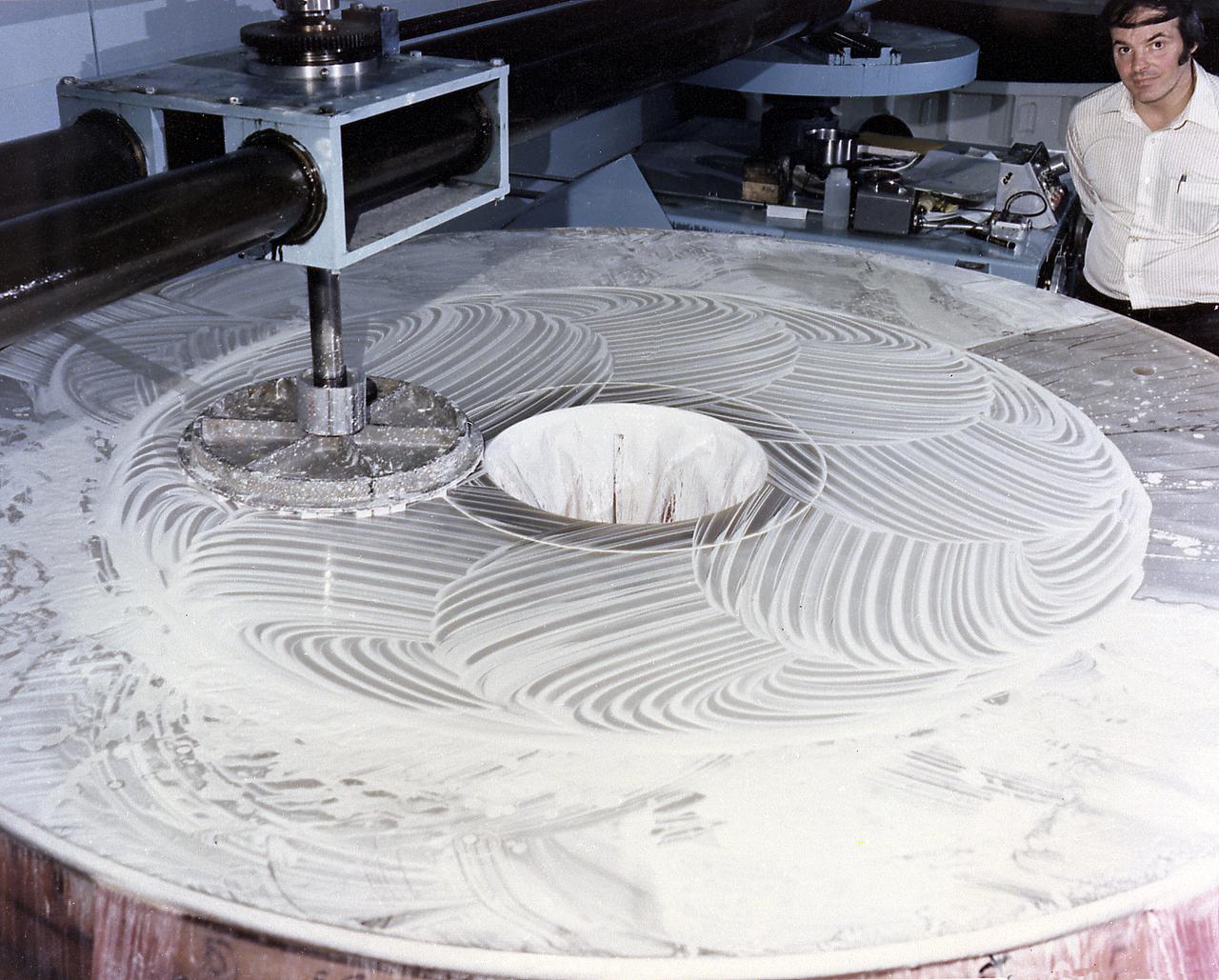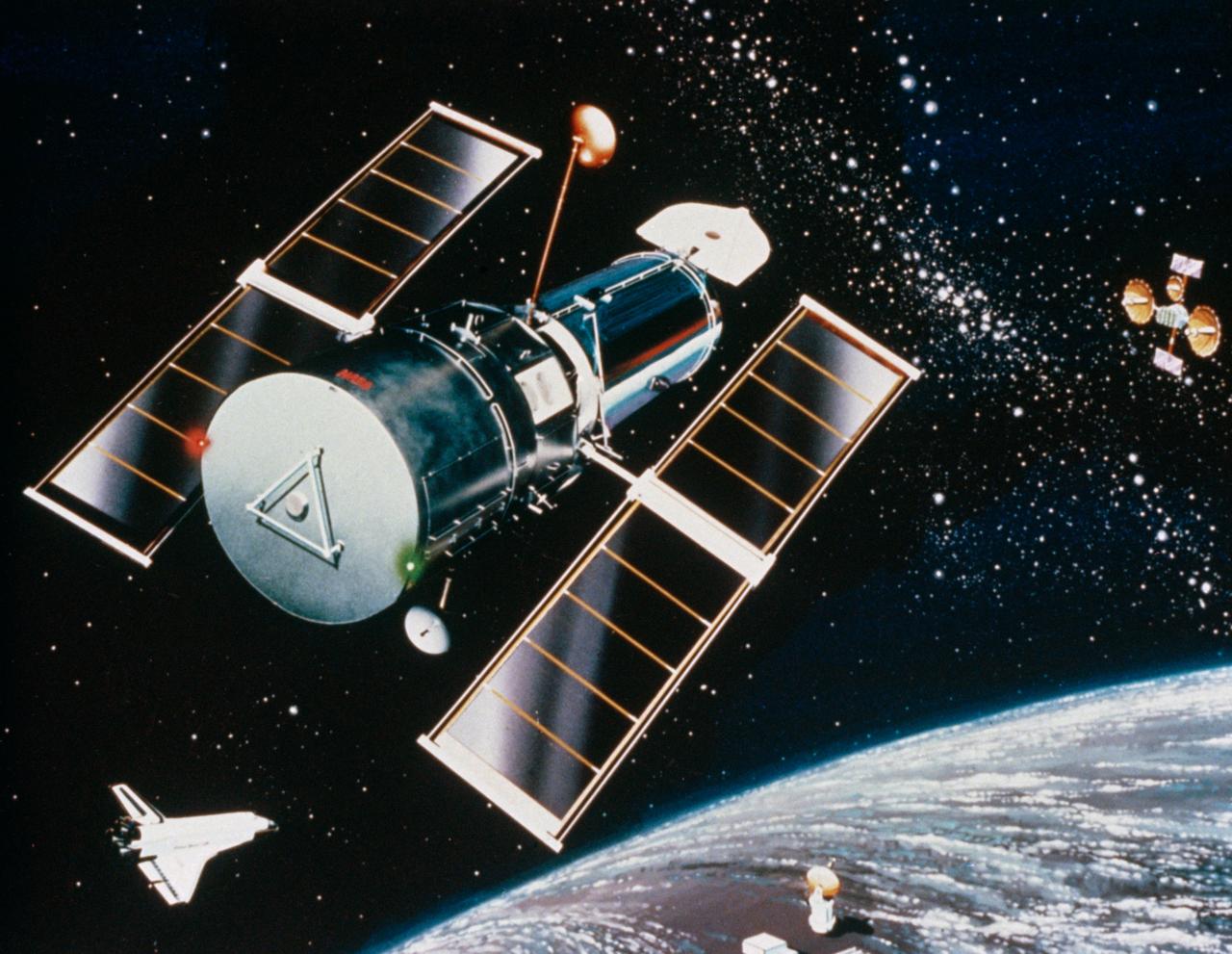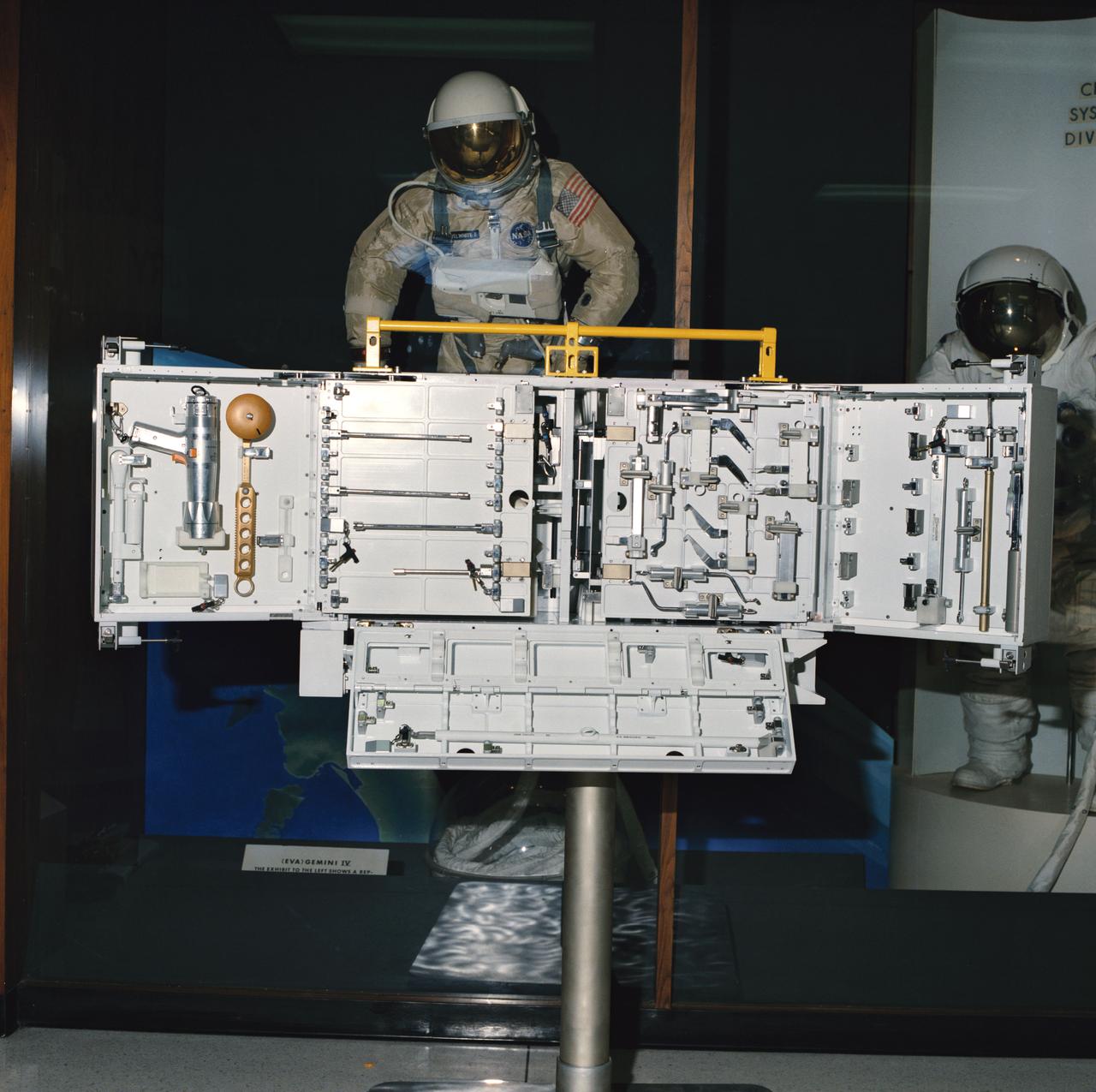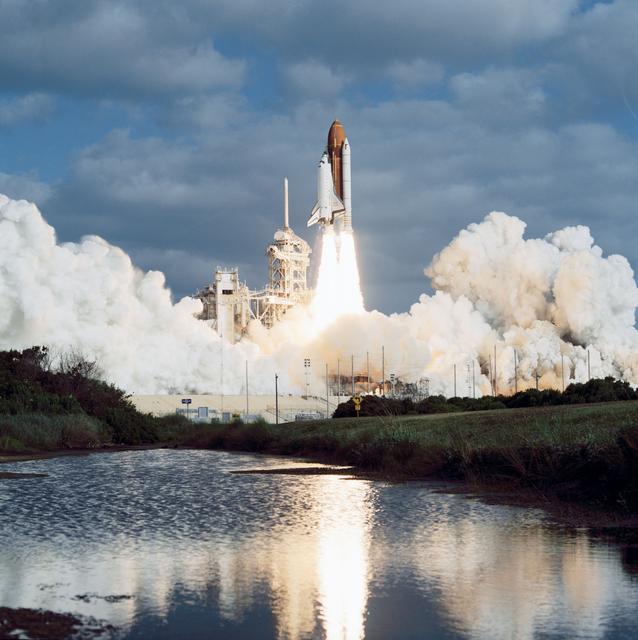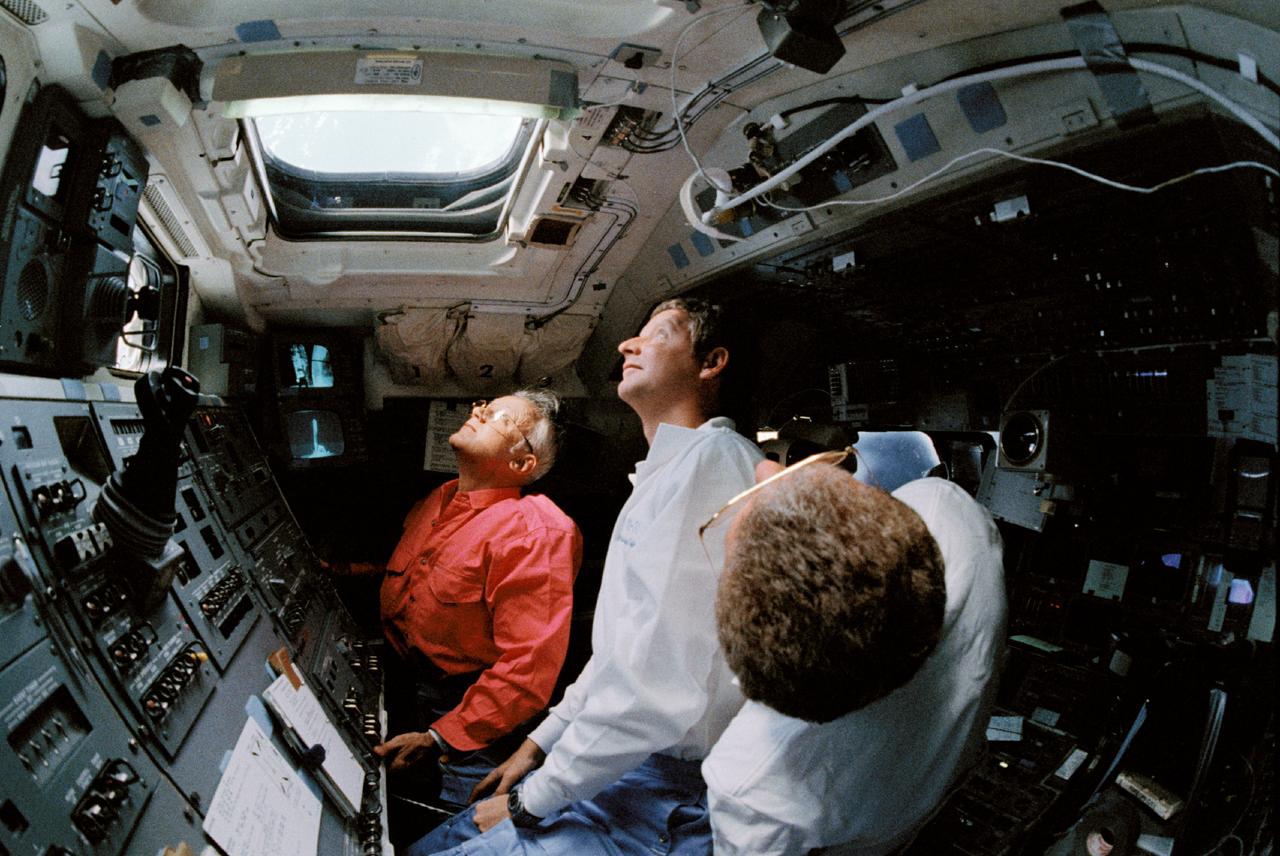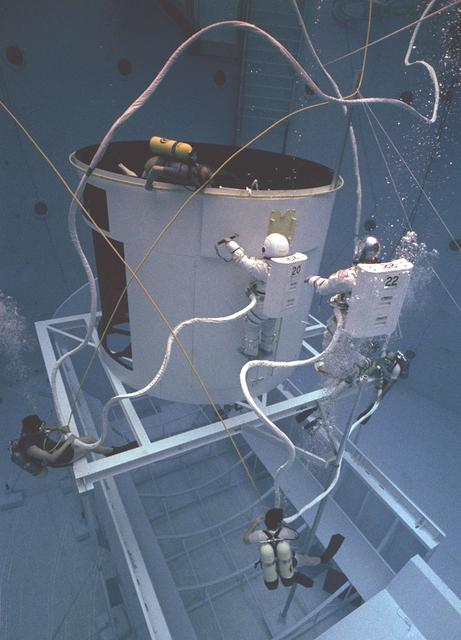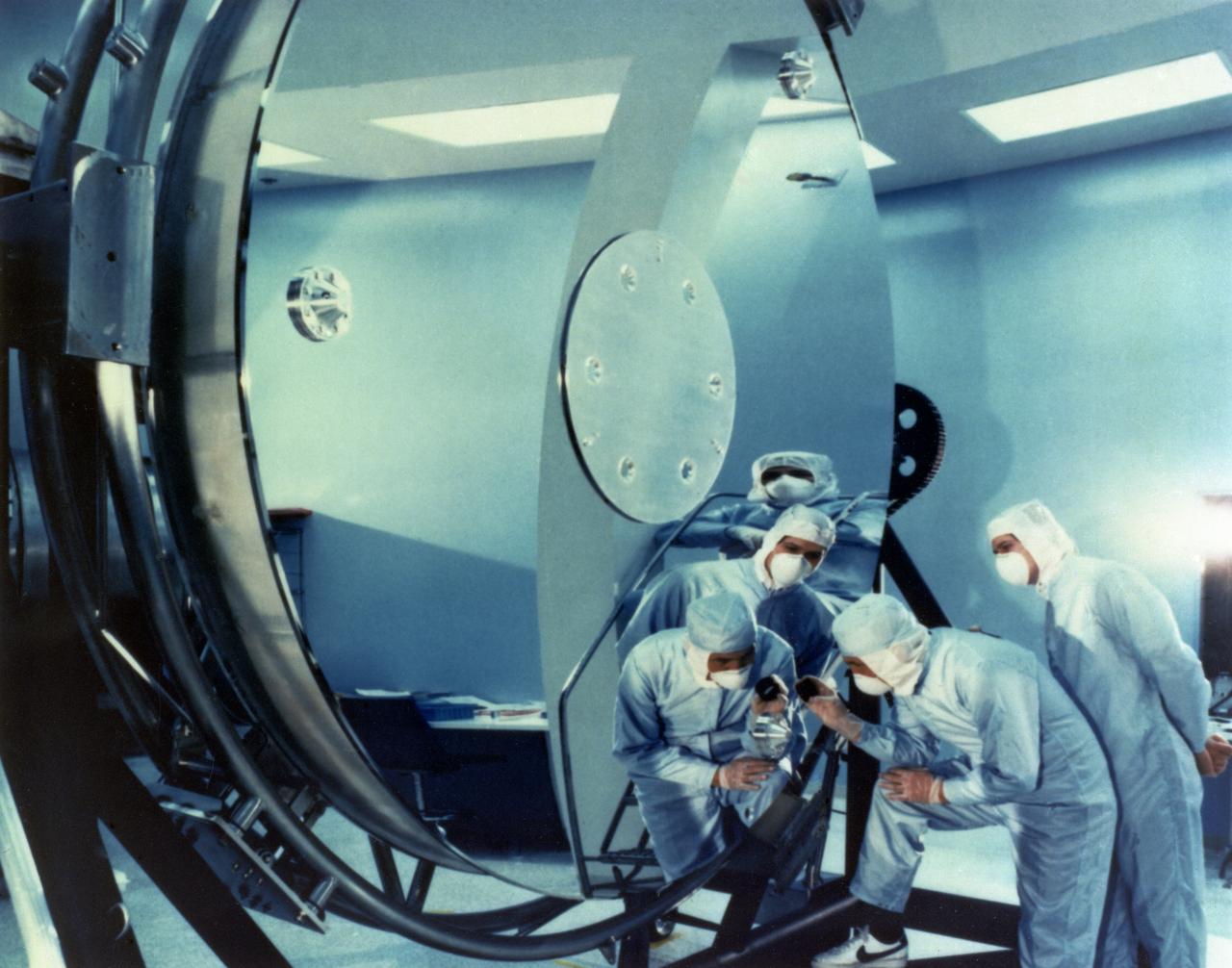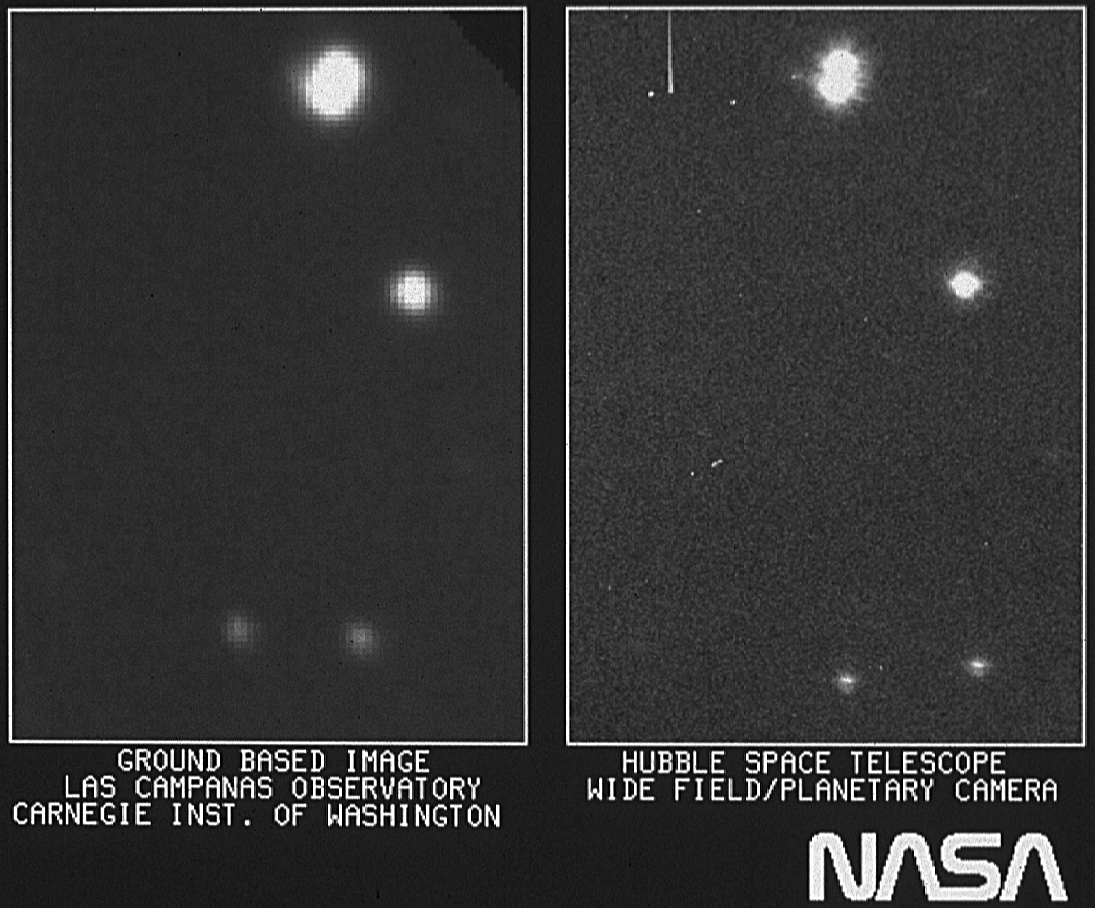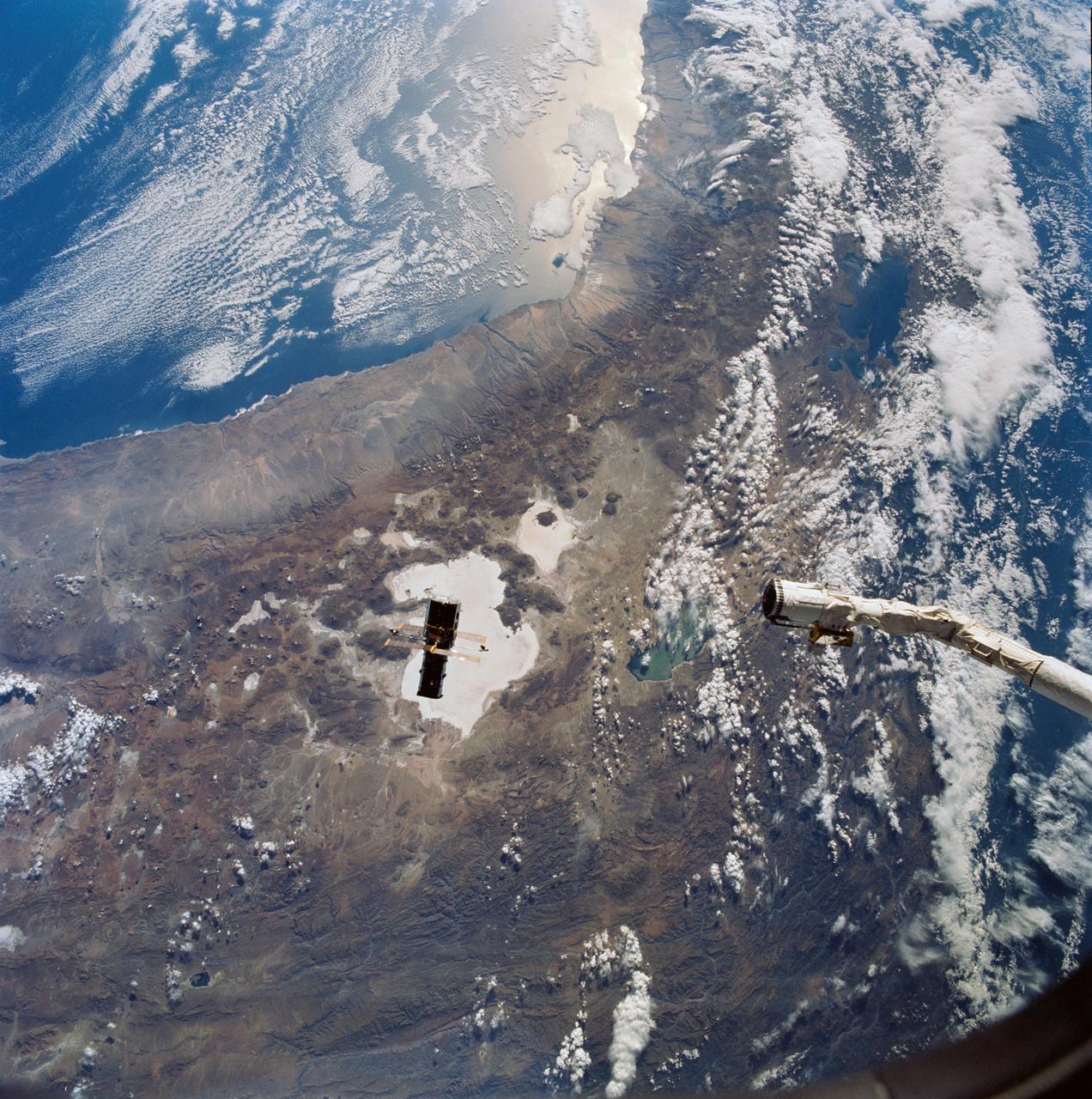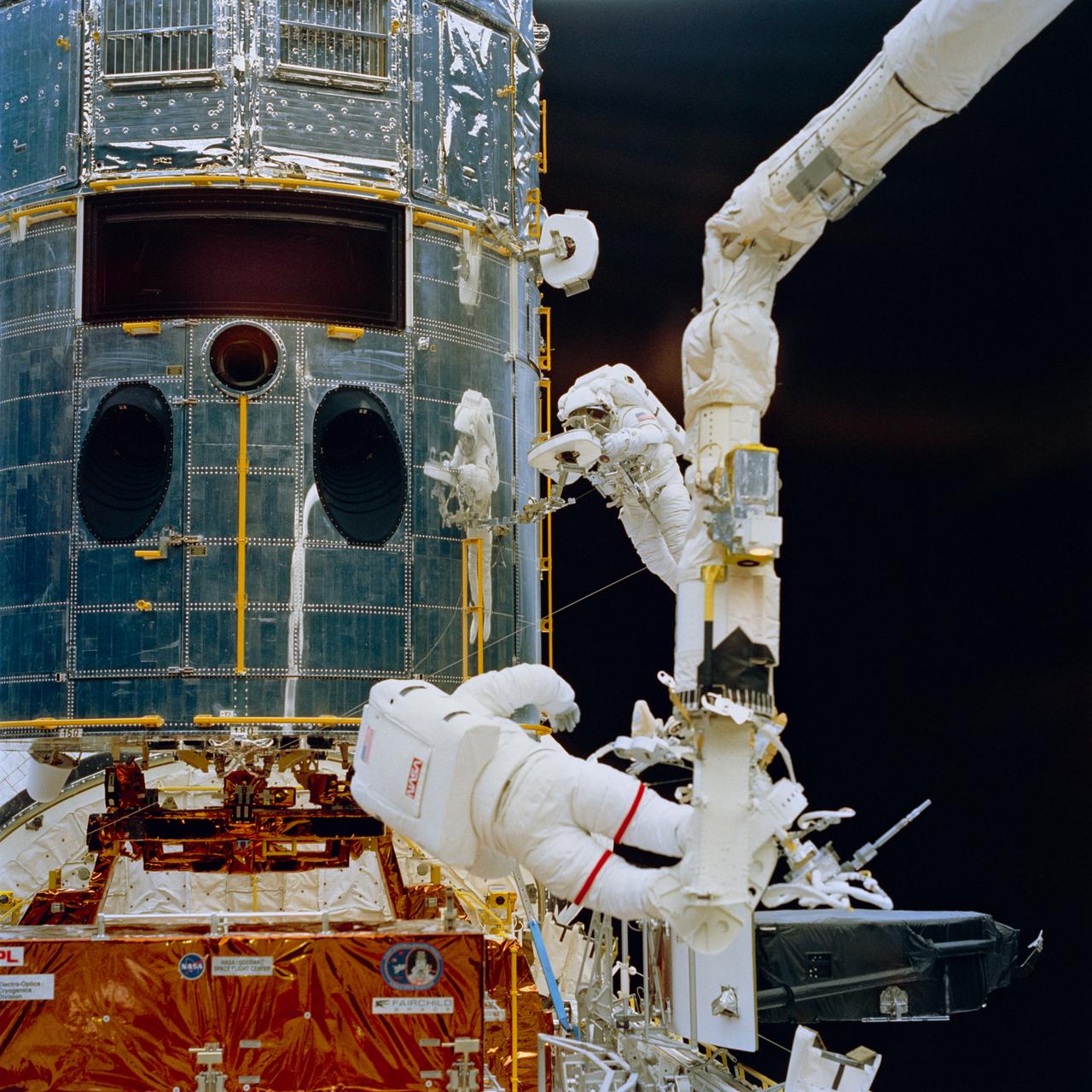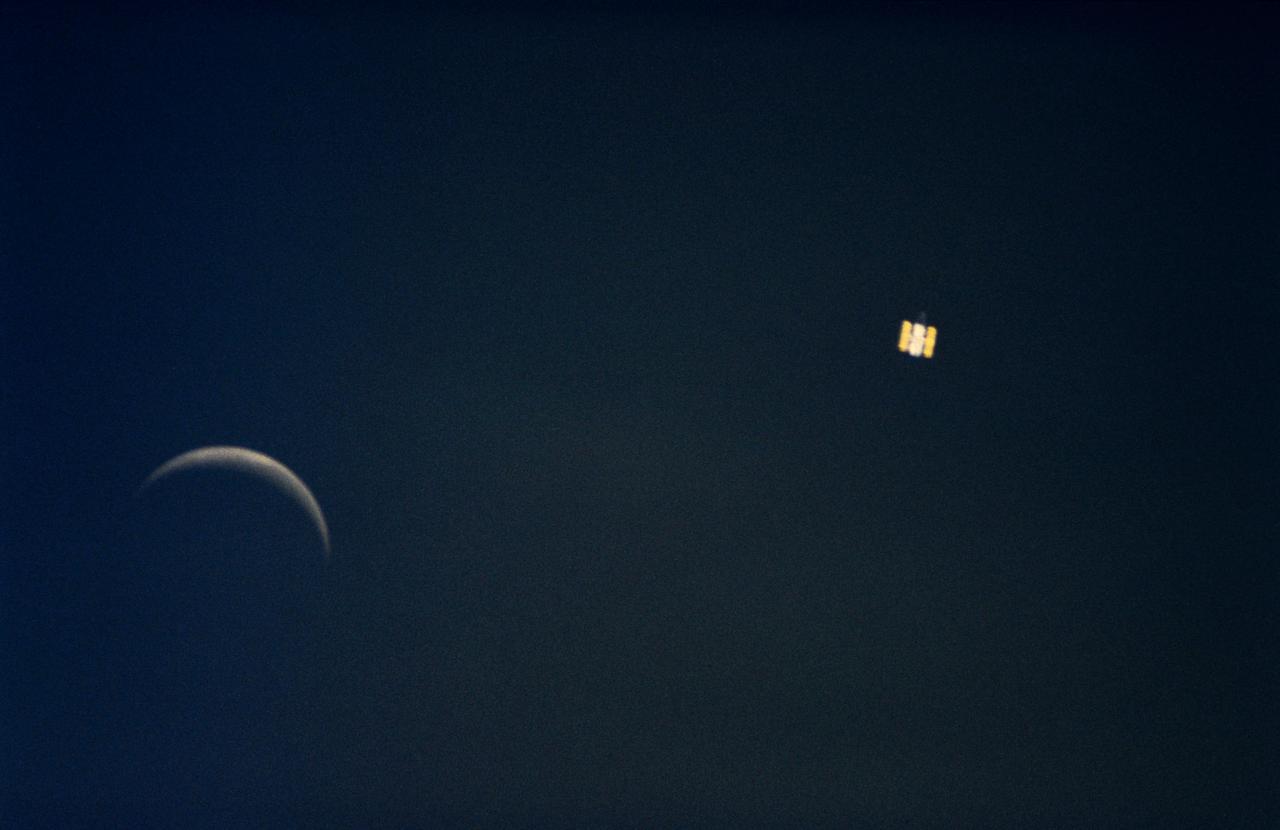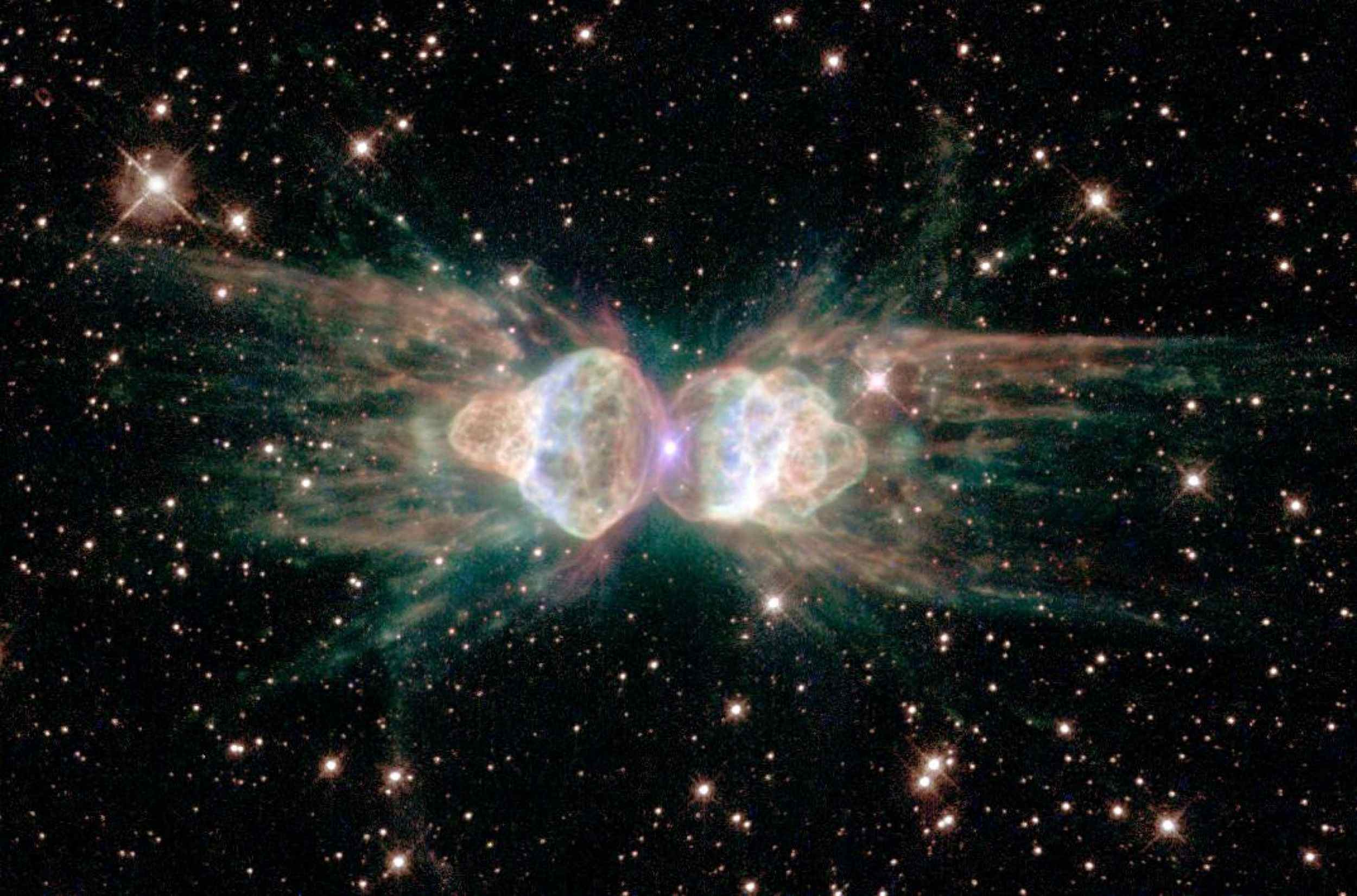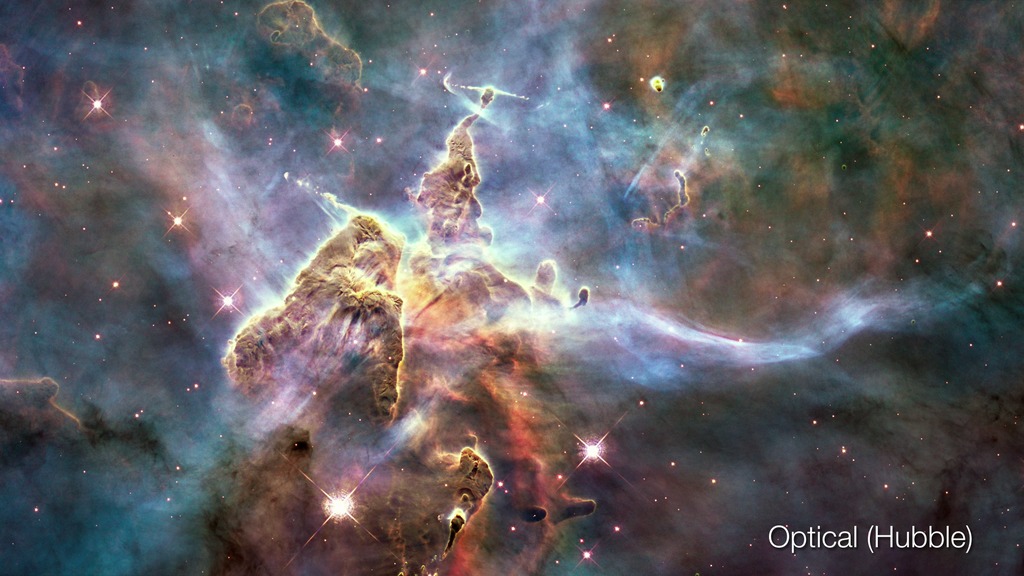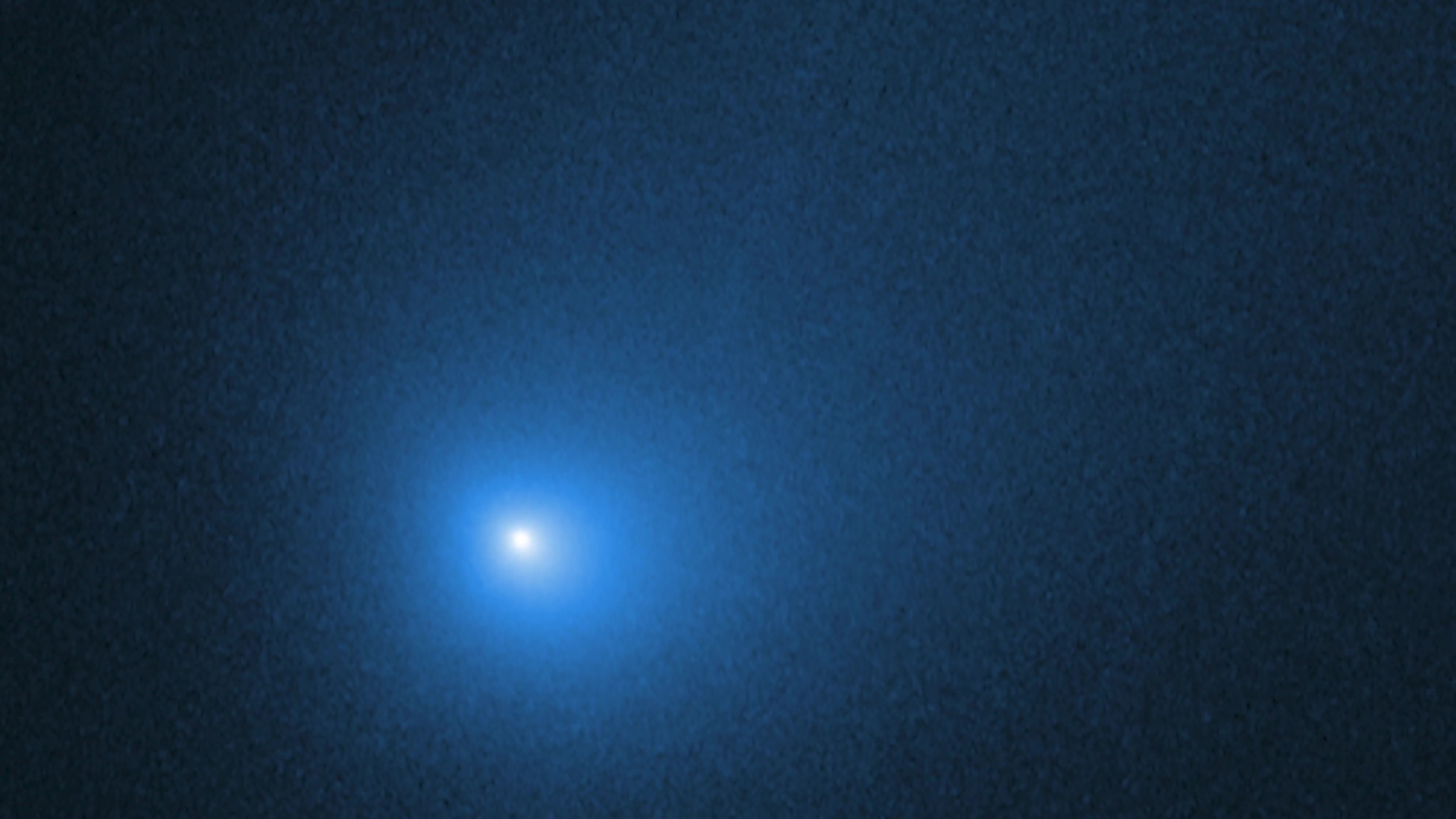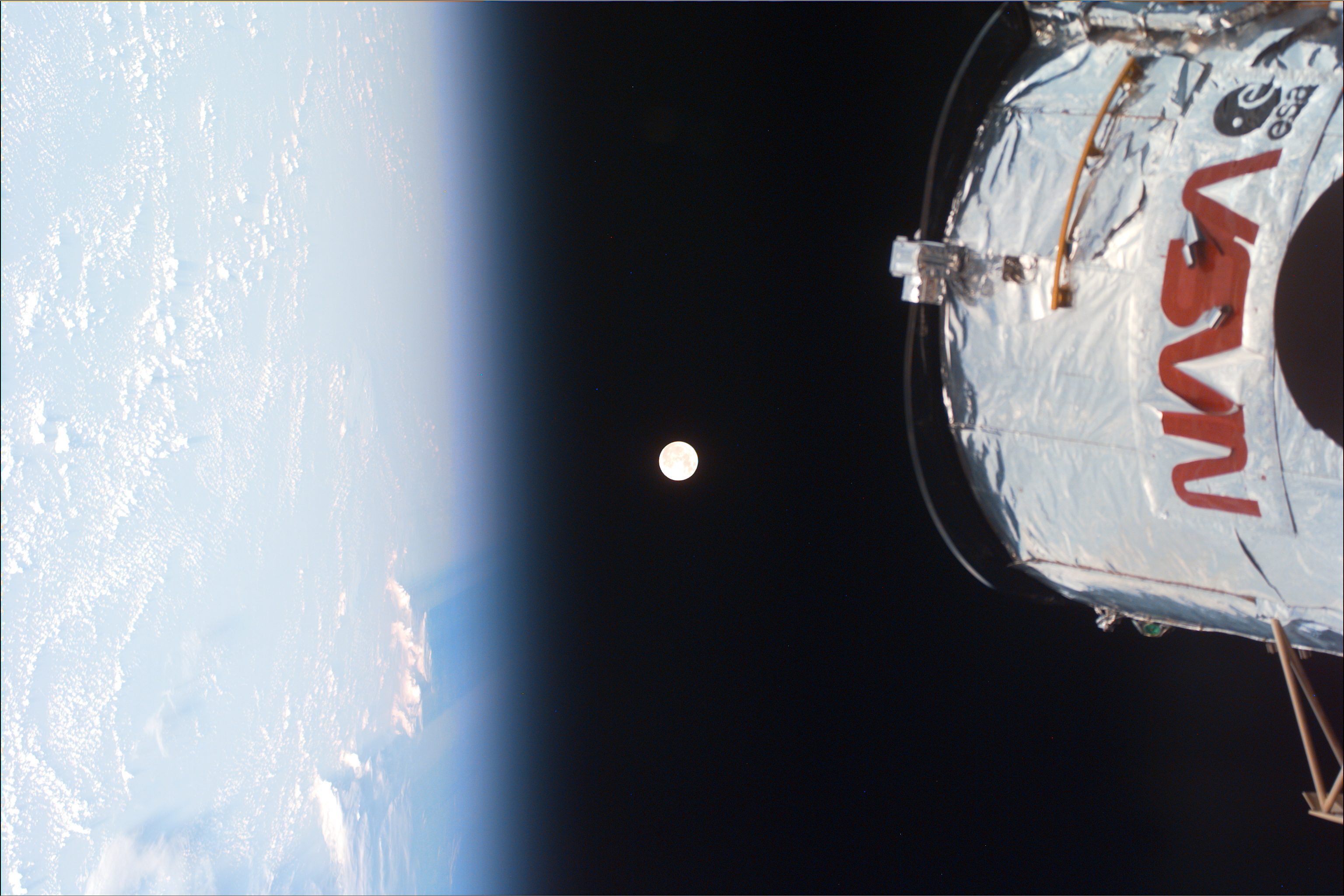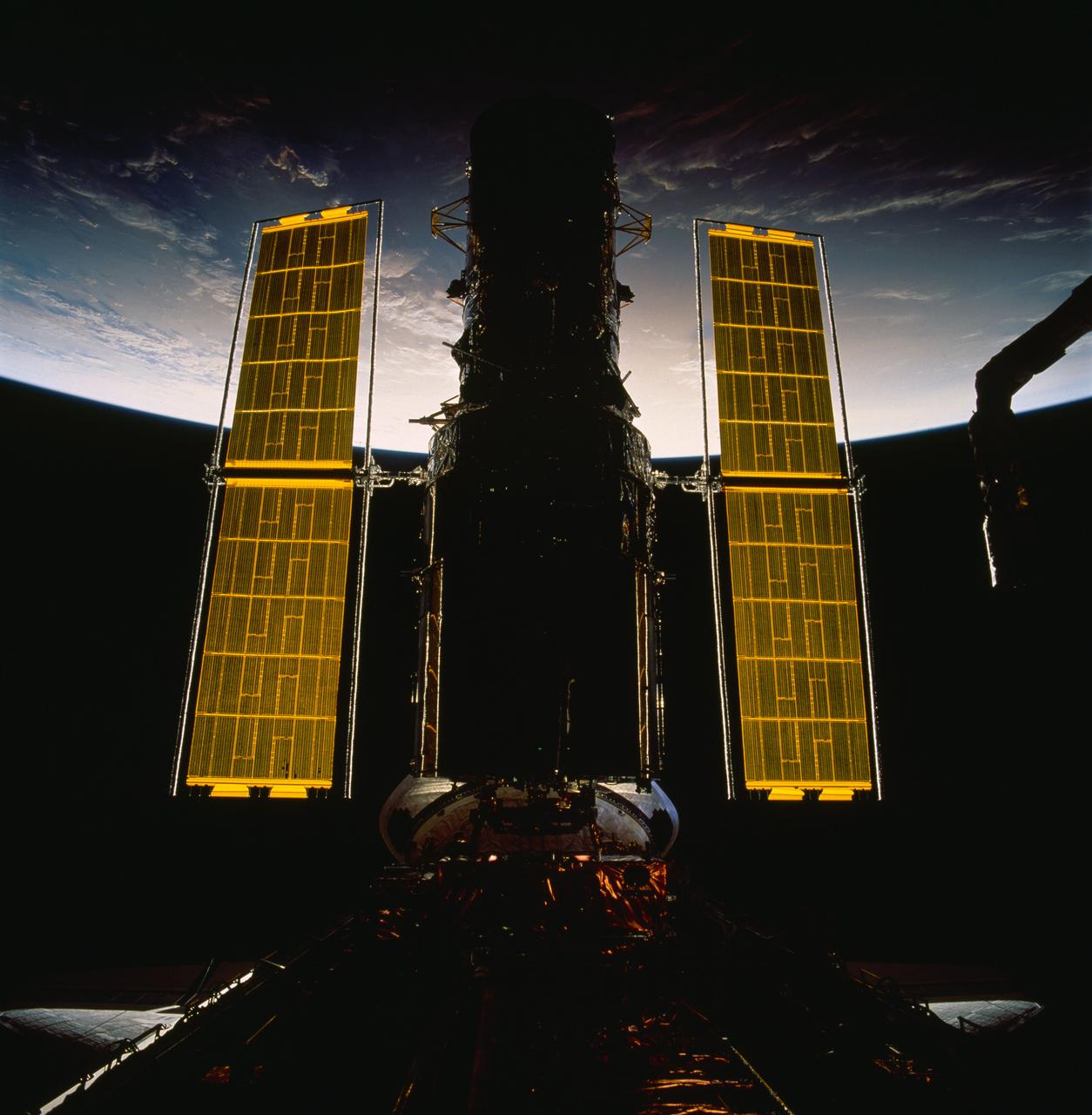The Hubble Space Telescope and 30 years that transformed our view of the universe
Hubble is here to stay.
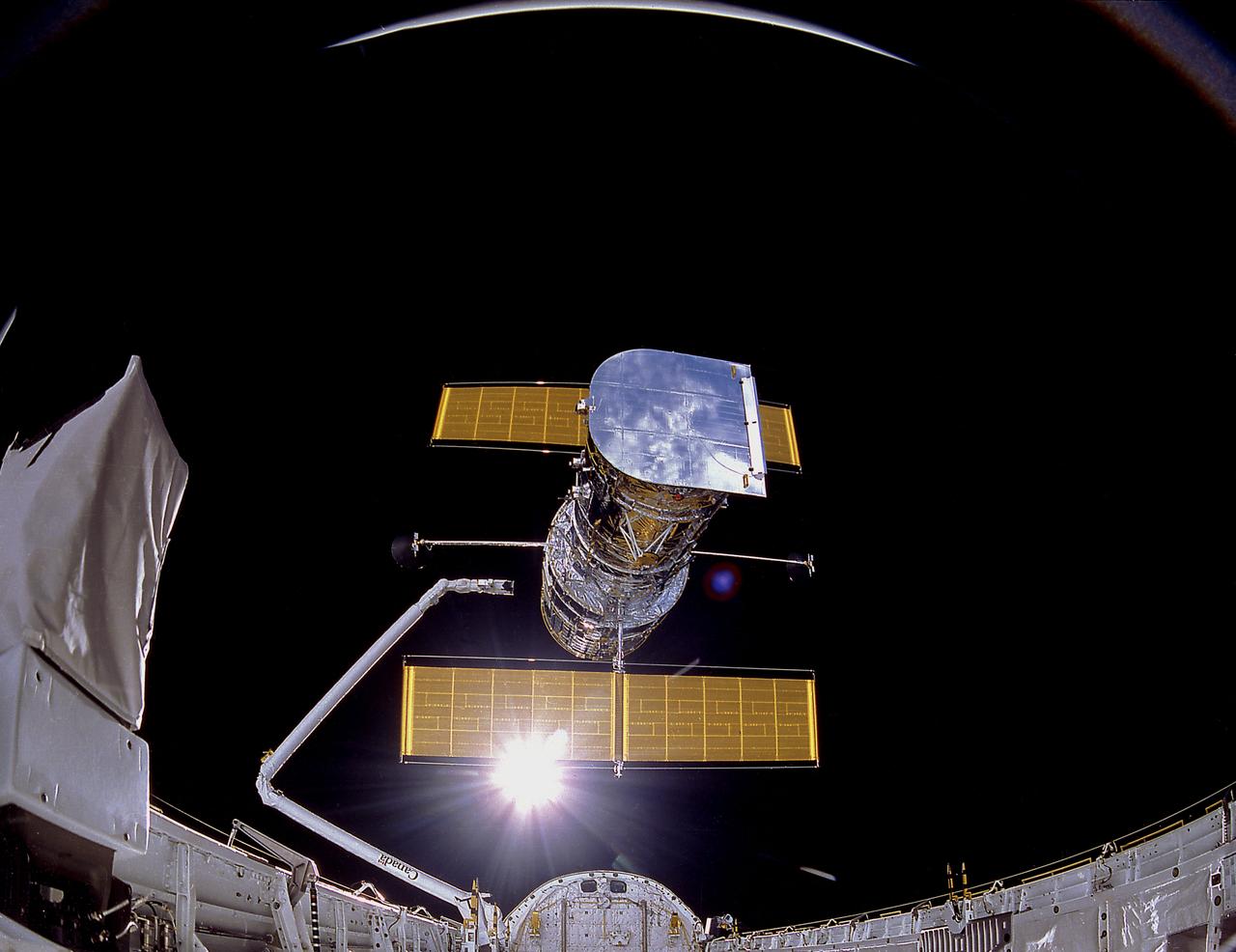
In the beginning, it was just the Large Space Telescope, its mundane name a marker of how very extraordinary an observatory it was. Decades later, it is simply Hubble, perhaps the most recognized telescope ever built.
A partnership between NASA and the European Space Agency, the Hubble Space Telescope, which left Earth 30 years ago today on April 24, 1990, has — as the saying goes — changed the way we see the universe. It has discovered evidence of supermassive black holes at galaxy centers, produced the first observations of disks around young stars, tracked storms on gas giants, revealed that the universe's expansion is accelerating, and, of course, taken incredible portraits of the cosmos.
But the Hubble Space Telescope is also a very human endeavor.
"We often see pictures from Hubble and people really love them, and they're wonderful," Heidi Hammel, a planetary astronomer at the Association of Universities for Research in Astronomy, which manages the Space Telescope Science Institute that coordinates Hubble projects for NASA, told Space.com. "I wish people would just take that moment to think about the tens of thousands of people who've dedicated their lives to make those pictures happen."
Related: The best Hubble Space Telescope images of all time!
Dreaming of the stars
The story of the Hubble Space Telescope begins two decades before launch: NASA first began seriously considering the mission in 1970. Space-based astronomy existed, but observing from the ground was a far more common approach.
The idea of a major space telescope project, then, faced some opposition. "The background is that Hubble was not considered a good buy," said Bob O'Dell, who was project scientist for Hubble during its development and is now an astronomer at Vanderbilt University. "The ground-based astronomers were a rather traditional group, and most of them thought it's better to spend that $300 million — which is what we were talking about in those days — on building some 20 copies of what was then the world's largest telescope," which collected light across a 200-inch diameter. (By 2009, NASA and partners had spent $10 billion on the then-19-year-old observatory.)
Breaking space news, the latest updates on rocket launches, skywatching events and more!
"One of my first jobs was to sell the project to my colleagues," O'Dell told Space.com.
He set to work with two key science arguments at his disposal. The first was a limit astronomers were hitting in their quest to reach farther across the universe. Because researchers observe light that takes time to cross space, studying more distant objects lets astronomers look back in time. In order to better understand the vast timeline of the cosmos, scientists needed a space telescope.
And observing from space also represented a huge increase in visibility. That's because an orbital telescope at 350 miles (570 kilometers) altitude carries astronomical instruments far above Earth's atmosphere, which blurs observations and even blocks certain types of light. Escaping that effect was tantalizing. "By being above the Earth's atmosphere, you would be able to see things about 10 times better, and that was as big a step as that very first astronomical telescope," O'Dell said, referring to one built by 17th century Italian astronomer Galileo Galilei. "There's got to be interesting stuff to be discovered."
But Hubble's proposed location wasn't the only thing that set the project apart. The Large Space Telescope, as it was then called, was also designed all along to be a work in progress, a telescope that astronauts would repair in space. Such a concept may not sound exotic to those who watched NASA build an entire laboratory in orbit — but the quest for a serviceable space telescope began long before such construction.
"You're talking about design work that was done in the very, very, very early stages of the space program," retired NASA astronaut Kathryn Sullivan, who wrote "Handprints on Hubble" (MIT Press, 2019) about the telescope, told Space.com. "There almost hadn't ever been a spacewalk, ever. And these guys are nonchalantly talking about a large telescope that astronauts will take care of in orbit. I mean, it's extraordinary vision and foresight."
Ultimately, that combination of vision and repair became the bedrock of Hubble's success, giving it a prime view of vast swaths of space — and giving scientists a way to isolate it from the ravages of time. It's what has given Hubble such a long, prolific tenure and kept it at the forefront of research.
"The kinds of things astronomers are proposing for Hubble have changed over the years, along with our progression of understanding, new questions and new problems in astronomy and astrophysics," Jennifer Wiseman, an astrophysicist at NASA's Goddard Space Flight Center in Maryland and current senior project scientist for Hubble, told Space.com. "Hubble is and always has been what we call a general purpose observatory, so it is used for all kinds of astronomy."
Road to launch
But before Hubble could get the slightest glimpse of stardust, it had to catch a flight to space aboard a NASA space shuttle. At the time, many shuttle flights were focused on deploying commercial communications satellites, Sullivan said, and a large space telescope flight stood out to astronauts years before the crew was actually assigned.
"We all studied the manifest, the schedule of future shuttle flights religiously and, sort of — I don't know — enviously, jealously, nervously, I guess," she said. "Every space mission is a great space mission, but some that were on that list clearly had more potential interest than others."
The flight was also delayed after the 1986 Challenger shuttle disaster, when seven astronauts died seconds after launch. Shuttle flights went on hold for two years as NASA investigated what went wrong and how to protect astronauts.
And before Hubble could launch, its scientists and engineers needed to be confident that it could live up to its promise of serviceability. Sullivan and her colleague, Bruce McCandless, were tapped for that project and for the deployment.
"Our job boiled down to: you're the last two astronauts who will have direct access to Hubble, hands-on access to Hubble. After that is going to be in orbit," she said. "Whoever goes up to service Hubble in the future, basically you have promised them that all of the tools and equipment they have will work, because you've tested it on the telescope while you still have it on the ground." The pair of astronauts were responsible for not just the half dozen things that might go wrong during their own deployment mission, but also for future astronauts' ability to unknot many more potential snarls in orbit.
No pressure.
Sullivan and McCandless donned spacesuits and went over every inch of a replica submerged in a massive neutral buoyancy pool to confirm their colleagues would succeed on servicing missions, and they did the same in protective gear with the spacecraft itself.
"We had actually spent hundreds of hours out in the super big clean room where Hubble was being assembled, taking out the tools that we had built for the different repair tasks and testing them, proving that they worked, finding out where they fit and picking up all the user notes that would be handy for spacewalkers of the future."
And then, finally, it was time to go: April 24, 1990.
Five astronauts — a small crew and all veteran spaceflyers in an era when that was unusual — piled into the space shuttle Discovery and left Earth. "By the time I got aboard the orbiter, it was sort of more than I could imagine," Sullivan said. "It felt like being part of something of much greater historical import than anything I had done before." (For context, Sullivan had already made the first spacewalk for an American woman.)
The next day, in orbit, it was time to see all 24,500 lbs. (11,110 kilograms) of Hubble off. But there were still those half dozen potential problems to address, and the deployment was a ticking clock. If something slowed the process, Hubble's batteries could irreversibly run out of juice, dooming the telescope.
Sullivan and McCandless were prepared. "We did half of the preparations for a spacewalk before we ever started lifting Hubble out of the cargo bay," Sullivan said. "We were halfway dressed basically, we were in the cooling underwear that you wear under a spacesuit and all of our gear down below was ready." All they would need to do to get outside would be pop on the suit shells and pre-breathe a little oxygen to stay safe.
And just as the Hubble team had worried, a delay arose: although one solar array unfurled smoothly, the other stuck. With their eyes on the clock, Sullivan and McCandless had to start suiting up. Before they got outside, Hubble engineers were able to remotely fix the issue, and the deployment continued smoothly.
Well, except for Sullivan's view of the historic moment. "After five years of working around this majestic vehicle and looking forward to watching it slide away from the orbiter like the newest star in the sky, I was in fact locked inside the space shuttle airlock and did not get to see the Hubble deployment at all," she said.
Early science and eyesight troubles
Sullivan and her colleagues headed home and the mission staff began waking and warming Hubble up. But soon, the Hubble team realized something was wrong. The images from the observatory were too dark. When the telescope photographed a star, the central portion of the image was crisp, as it should have been, but surrounded by a halo of glare.
Hubble's mirror had been shaped with great precision, as you'd expect for such an instrument. But a fleck of paint caught on the tool used to calibrate that shape. As a result, the mirror's shape was precise but not accurate. According to O'Dell, who was no longer chief scientist at the time but still involved with the project from his new professorship, budget and scheduling woes were to blame.
The team recognized an error with the observatory's pointing-control system, which was an entirely new technology, late in the process and had to redesign that system, he said. At the same time, another team was finishing the mirror, which built on previous work but had never been done at such scale. No one noticed a flake of paint on the tool used to confirm the mirror's shape — skewing the mirror before flight.
And because the team didn't have the money to optically test the instrument on the ground, no one realized the issue until the mirror was awfully difficult to reach. "It was something that just wasn't caught," O'Dell said. "The flags that were there that something was missed were basically put in a drawer and the NASA people were told 'well, this is not important.'"
That could have been the end for Hubble, he said.
"Immediately after launch and [after] the screw up was discovered, if not the explanation, a handful of people … washed their hands of the project and walked away from it," O'Dell said, "to their loss and to the loss of science." But others stayed, and Hubble got to work studying the universe anyway.
NASA tracked down the faulty mirror-check instrument, which had been untouched since that use, and confirmed the error. Scientists developed algorithms that could convert its distorted images into a more accurate view of the cosmos, albeit darker than planned.
One of Hubble's first discoveries was confirming the existence of protoplanetary disks in the Orion Nebula, a phenomenon scientists had predicted but never studied directly. "All of a sudden, we could see it happen. You knew just how it was happening, you could prove a theory, a hypothesis I should say," O'Dell said. "Those first three years, the Hubble was still very useful."
But the team behind the telescope wasn't satisfied by the workaround. And, after all, what was the point of designing a serviceable observatory if you weren't going to, you know, service it?
"You could not have asked for a better proof point of the value of designing for maintainability," Sullivan said. "You have a multi-billion dollar flagship mission that's got extraordinary scientific potential, but for this one thing. If you cannot fix that one thing, you're going to write the whole thing off. And if you can fix it, off you go."
How to fix a space telescope
Of course, theoretically possible is a far cry from easy. One thing the Hubble team had going for it was that the mirror error could be reversed by tweaks to lenses applied to the individual instruments, lenses that needed to be inserted anyway, O'Dell said. Since engineers knew precisely the flaw of the mirror in orbit, those corrective lenses could counteract it.
While optometry from 350 miles away is a tall order, the idea of servicing was familiar territory. "Our telescopes on the ground, we're constantly servicing them, we do it every day practically," Hammel said. "What's unique about Hubble was the serviceability aspect for this astronomical telescope in space."
And in 1990, despite the grand concept behind Hubble, space repair was not a known quantity. NASA had dreams of building a multi-part space station, but hadn't yet done so. (The agency's Skylab launched as a single piece in 1973.) The agency was conducting spacewalks from the shuttle, but they were limited. At the time, each flight could support a maximum of three excursions, and one was always reserved for any emergency with the cargo-bay doors, Sullivan said.
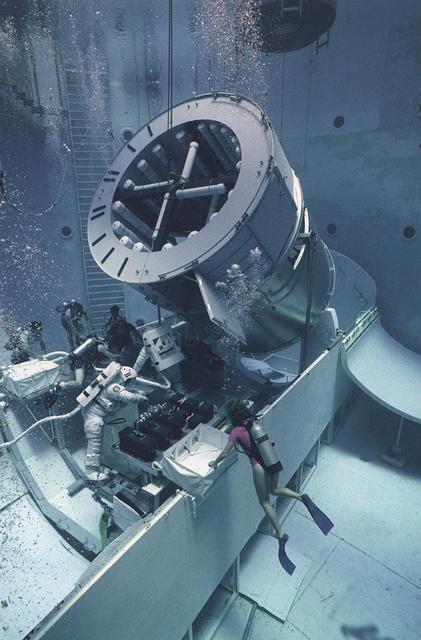
In the scenarios she and McCandless studied, a hypothetical servicing mission would require four spacewalks. "We knew before we put Hubble into orbit that keeping Hubble alive is going to require at least twice as much spacewalking capacity from the space shuttle as NASA currently thinks it has," Sullivan said. "We were never able to get people to focus very much on that before we put the telescope up into orbit."
Then the mirror flaw was discovered, and suddenly, NASA had in orbit a huge investment seriously weakened — and the theoretical means to save it. "NASA did not know how to do spacewalking at scale, at the time we put Hubble into orbit," Sullivan said. "It was the absolute urgency of fixing Hubble in the 1993 flight that really was the spur, the kick in the thigh that really forced NASA to get down to brass tacks."
The agency upped its spacewalking game and in 1993, the first Hubble servicing mission to conduct five days of spacewalks to improve the telescope's eyesight. That flight was followed by four more servicing missions between 1997 and 2009. Hubble's repairs ended with 2009's STS-125 shuttle mission. The retirement of NASA's space shuttle fleet, which made its final flight in 2011, cut the observatory off from its repair team.
During servicing spacewalks, astronauts replaced batteries and the gyroscopes that keep Hubble pointing steadily at the same speck of cosmos, lengthening the life of the observatory in the harsh environment of space. And they upgraded instruments to incorporate technology developed long after Hubble left Earth.
"By designing from the outset to have this telescope be serviced, by definition you had a longer lifetime and you had the power to take advantage of improved technology over the decades," Hammel said. "Think about the computers that we had 30 years ago versus the computers we have today."
The result is a 30-year-old telescope that feels much younger.
"Every time those astronaut missions returned to Hubble, we basically got a new observatory," said Wiseman, Hubble's current senior project scientist.
30 years of science
The continuing science of Hubble speaks to that longevity. "There are so many areas in which Hubble has, as we say, changed the textbooks, that it's really hard to narrow this down to simply one major accomplishment," Wiseman said.
But here are a few. Hubble told scientists that the expansion of the universe is accelerating when they had expected to see it slowing. That realization in turn helped point to mysterious dark energy. Astronomers are still wrestling with the phenomenon even as the universe's expansion rate poses new puzzles. The observatory also traced the motion of matter near the center of galaxies, sketching the shadow of supermassive black holes at their hearts.
Wiseman is particularly entranced by work Hubble was always meant to do: Show astronomers how galaxies have changed since the earliest days of the cosmos.
"Hubble, to me, has given us this profound visual view of how the universe has developed over billions of years of time, into the magnificent and even hospitable place that we are living in right now," Wiseman said. Hubble's portraits of the earliest galaxies show small, oddly shaped galaxies that didn't get far before colliding with neighbors in a process that builds up more structured galaxies like ours. Similarly, it saw elements born within stars scatter across space to seed heavier compounds like those in our planet (and in our bodies) right now.
Hubble has made observations scientists never thought to hope for before the telescope launched. When Hubble left Earth, astronomers suspected exoplanets to exist but had never identified one. Now, the telescope is a vital tool for studying such distant worlds in detail, particularly giving scientists a sense of the composition of their atmospheres — although some of those observations have required improvising new techniques for looking at bright objects.
"I think this is the reason why we have what are called great observatories," Nikole Lewis, who studies exoplanets at Cornell University, told Space.com. "They are built to be very utilitarian, they're built to be flexible. They're built to have lots of different operational modes that will allow you to do a broad range of science."
The universe to come
Other observations that we can't even imagine today will likely follow. "What naturally happens is that when you have this flexibility, when new science cases come along, they're able to leverage that flexibility, so that's exactly what we saw with Hubble," Lewis said. "I expect as long as Hubble's up there, people are going to find creative ways to use it, whether it's exoplanets or some other new science case."
In our neck of the woods, Hubble has provided decades of observations of the atmospheres of the outer planets, where yearly weather cycles last for decades. It has watched Jupiter's Great Red Spot shrink and traced storms on the surface of Neptune. The telescope has already committed to continuing these observations for as long as it remains in operation, Hammel, the planetary astronomer, said.
And in the past few years, Hubble has joined astronomers as they scrambled to study exotic objects streaking across our solar system: first 'Oumuamua, spotted in October 2017, then Comet Borisov, confirmed as an interloper in September 2019. "These are messengers from other star systems, and if we can get a handle on their shapes and compositions, we'll know something about the star systems from which they came," Wiseman said, and in turn, how those neighborhoods compare to our own.
Even if Hubble turned off tomorrow, its decades of observations would continue to fuel science. About half the research that cites Hubble data draws on its archived observations rather than data gathered specifically for that project, Wiseman said. "We often think of Hubble as being mature, which it is, but it's also vibrant," she said. "With this robust archive, we're getting double the bang for the buck in a sense."
And, of course, there is Hubble's legacy of images.
"I'm continually dazzled by them," Sullivan said. "They're mesmerizing. I'm a geologist, not an astronomer, so I look at them probably like most everyday human beings do, as just extraordinary works of art."
Those images, like the rest of Hubble's data, change the way we see our universe. "I hope that Hubble just keeps going," Lewis said. "It's like it's a dear friend … who is providing us looks at these worlds that we would have never thought possible."
Looking ahead
NASA is banking on a long future for Hubble, which the agency says is still in good condition. But that's no reason to stop building new telescopes. The final servicing mission, STS-125 in 2009, aimed to extend Hubble's life through 2014, with anything longer as a stretch goal. NASA is well into stretching, although the agency says it believes the facility will last at least until the middle of the decade.
The mission's successor, the James Webb Space Telescope, is scheduled for launch in March 2021 despite countless delays and overruns. But while Webb will also serve as a great observatory and address a host of science questions, it will not continue the facility's legacy of serviceability.
"There are a host of scientific factors that drive you to want to put it very, very, very far away from Earth," Sullivan said. (Webb will be 1 million miles, or 1.5 million km, away, in fact.) But neither robot nor human repair support can make house calls that distant. "That's, I guess, a bit of a stretch, to expect someone to design for that kind of maintainability when there's no real technical viability to deliver it," Sullivan said.
Hubble's scientists are focused on getting as much out of the telescope as possible, no matter when it needs to be retired, Wiseman said. In particular, researchers are gathering ultraviolet observations, which other telescopes can't substitute for: when Hubble is done, ultraviolet astronomy will suffer a real blow.
The team is also focused on amplifying Hubble's potential by pairing its observations with other instruments. Wiseman pointed to coordination with NASA's Juno probe around Jupiter, for example. Where Juno studies the massive planet's magnetic field firsthand, Hubble from Earth contributes observations of the auroras that Jupiter's magnetic field creates. Similarly, where Hubble excels at ultraviolet astronomy, the Chandra X-ray Observatory and the recently retired Spitzer Space Telescope, an infrared observatory, filled out the spectrum of light astronomers can study.
And that's a reminder that astronomy is far more than just Hubble. "Astronomy couldn't exist with only the Hubble Space Telescope," Hammel said. "It is one very powerful tool to do one very powerful kind of science. But it works in conjunction with all the other telescopes that we have."
And, of course, with all the humans behind those telescopes as well.
- Kathy Sullivan, 1st American woman to walk in space, on the all-female spacewalk that could have been
- NASA is turning off the Spitzer Space Telescope. Its infrared eye changed our view of the universe.
- How the Hubble Space Telescope works (infographic)
Email Meghan Bartels at mbartels@space.com or follow her @meghanbartels. Follow us on Twitter @Spacedotcom and on Facebook.
OFFER: Save 45% on 'All About Space' 'How it Works' and 'All About History'!
For a limited time, you can take out a digital subscription to any of our best-selling science magazines for just $2.38 per month, or 45% off the standard price for the first three months.

Meghan is a senior writer at Space.com and has more than five years' experience as a science journalist based in New York City. She joined Space.com in July 2018, with previous writing published in outlets including Newsweek and Audubon. Meghan earned an MA in science journalism from New York University and a BA in classics from Georgetown University, and in her free time she enjoys reading and visiting museums. Follow her on Twitter at @meghanbartels.

